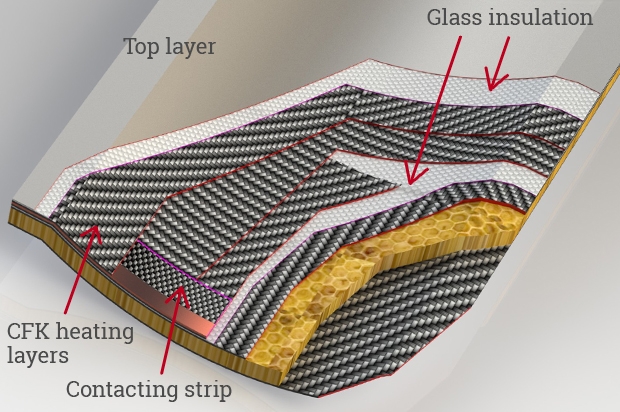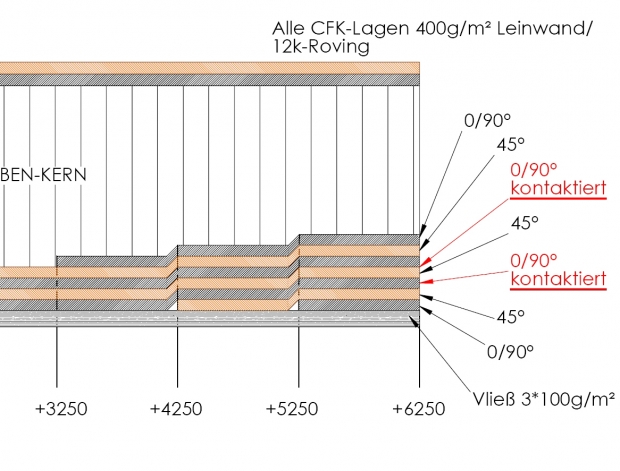Construction of moulds
The mould shells of the fibretemp® system are designed as a sandwich construction. A Nomex honeycomb core is often inserted as core material. This core material has the advantage that no significant stresses due to different thermal expansion coefficients are introduced into the mould shells.

The top layer of the mould shell, including the integrated CRP heating are manufactured in vacuum infusion process. For this, the dry semi-finished fabric products, starting with thin glass fabric for electrical insulation, are laid on the master plug. The carbon fibre fabric layers of the electrical resistance heating follow. Between the heating carbon fibre fabrics, special fibretemp® contacting strips are inserted at the end of a heating panel, to induce the current into the carbon fibre layer without increasing contact resistance. After another insulation layer of glass, often additional carbon fibre fabric is laid for stiffening the top layer.
Before the fibre set is impregnated with resin by vacuum infusion, a heating test is done in the "dry" state.
The honeycomb core is adhesively bonded to the cured top layer using a low temperature prepreg. Another two layers of carbon fibre prepreg cover the honeycomb core and complete the sandwich construction of the mould shell.
To ensure dimensional stability of the mould shells at varying application temperatures, the complete fibre construction is done quasi-isotropic. The sandwich construction results in a lightweight, bend-proof mould shell with integrated insulation and low storable heat input.




